The track toolbox
Panzer tracks needed their own tools to allow removal of pins, etc. Each type of Panzer typically had its own toolbox dedicated to track tools. For the Tiger, a rather large box was designed. It was stored on the outside of the tank at first, on the left-hand rear wall, but in late 1943 it was moved to inside the crew compartment.
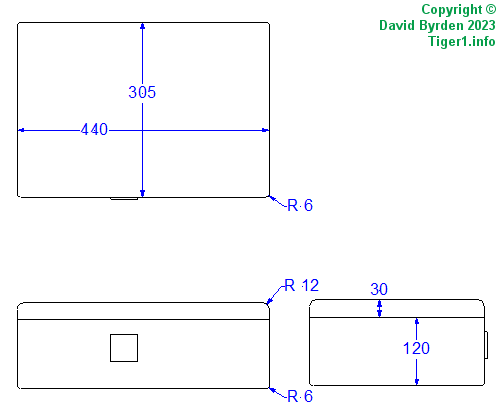
The box was made of sheet metal, about 2mm thick. These are its major external dimensions. A tiny nook was fixed to its front in which a locking padlock could be protected.
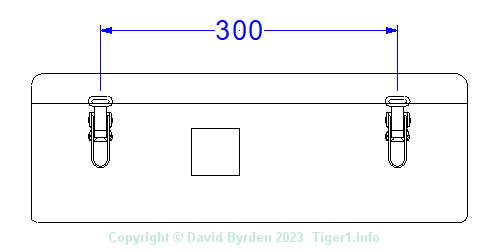
The first version of the box had a hinged lid. The hinges were at the back of the box, and two standard German latches were attached to the front. They held small tabs welded to the lid. It could also be locked with a padlock, as already mentioned.
Attachment to the tank
At first the box was held on the rear wall by straps, fixed to the wall at their ends. The first Tigers at Leningrad used this approach. A little later, the 501st battalion devised a different attachmend for their Tunisian Tigers. They fixed two metal strips to the underside of the box and welded the ends of those strips to the hull wall.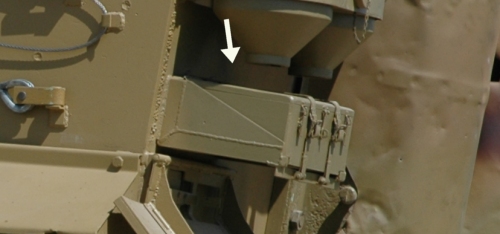
After a few dozen Tigers had been built, a dedicated storage frame was provided for the track toolbox. Due to the small amount of space between the Feifel filters and the mudflaps, the box was mounted perpendicular to the hull rall rather than flat against it. This example (arrowed) is on Tiger "131" at Bovington Museum. Their toolbox is an obvious fake, but their frame is the tank's original one.
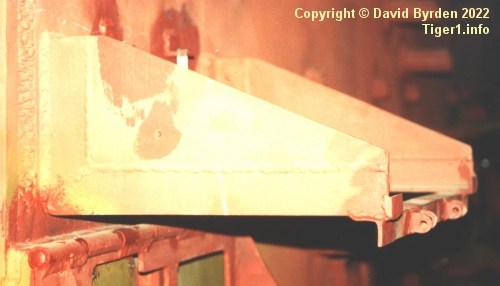
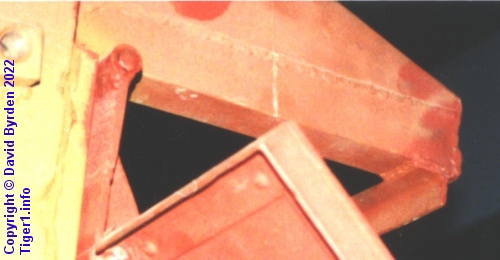
The frame was made of metal plating and angle iron. Bovington's example is lacking its straps, which had their own latches of the same type as the box' latches.
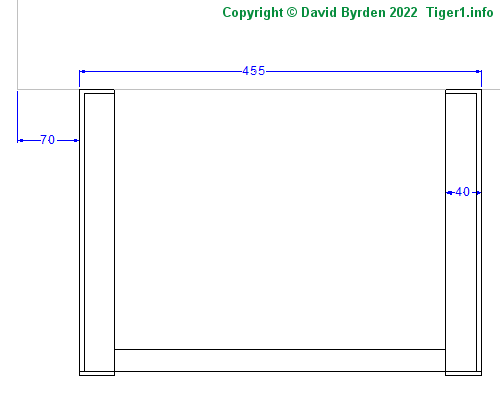
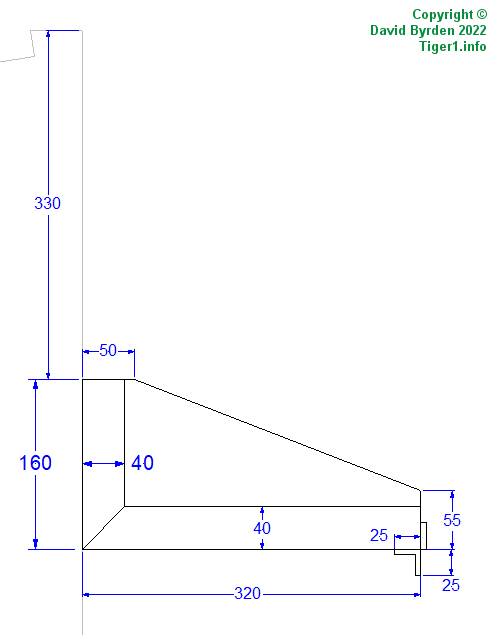
These are my drawings of the frame. [2]
Storage inside the tank
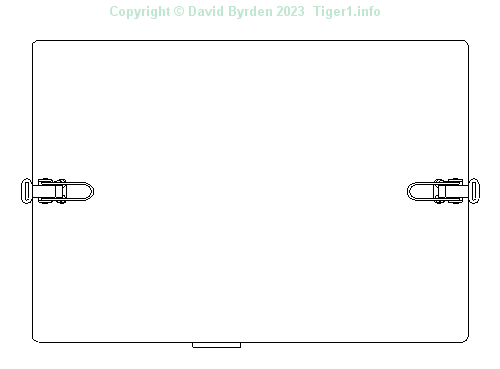
In late 1943 the toolbox was moved to inside the Tiger, on the floor behind the driver's seat. The box itself was altered slightly. Now, its lid was not hinged or permanently attached. Instead, two latches on the lid kept it in place. This is a view of the new box from above. [1]
[1] Drawing 3376 "Anordnung des Kettenwerkzeugk. hinter dem Fahrersitz"
[2] Survey of Tiger 250122, at Bovington museum, by David Byrden